So you bought a DSLR kit (body+lens) a while ago. You know that you can buy additional lenses for your camera but don’t know where to start and what to look for. This guide will get you up to speed in no time, from basic lens info to advanced topics and buying tips. Even if you’re a more advanced user, this guide will still help you make the best choice for your next lens.
1. Introduction
A very common mistake people make is to buy the most expensive DSLR body they can afford and use just the included lens with it (the so-called the “kit lens”). The kit lens is usually small and cheap, just enough to get you started, but rather inadequate for any advanced creative work. In worst-case scenario, the lens will negate your sensor size – a crappy lens on a 24 Mp camera might deliver the same results as a good lens on a 6 Mp camera.
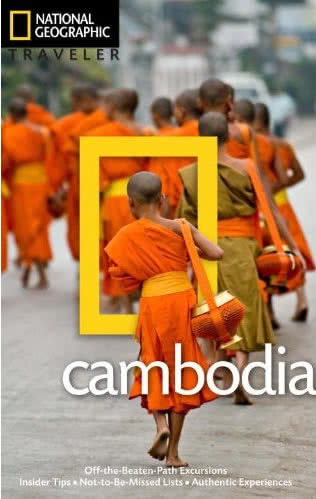
Look at the photo above. This cover of National Geographic Traveler, by Luciano Mortula was shot with an entry-level Sony a100 equipped with a top Sony 70-200 f/2.8 G SSM lens (shot at 200mm, 1/80s, f/2.8, ISO 400).
2. Basic lens characteristics
2.1. Focal Length
The first and most important lens property is its focal length. If you remember from the physics classes (or just from your days as a kid burning stuff with a loupe), focal length measures the distance from the lens to the point where the light rays are focused to a point. Of course, in photography we don’t want to focus the image to a burning point, just bring the rays nicely focused as an image on the sensor plane. Longer focal lengths are associated with higher magnifications and thus they’re directly related to the angles of view.
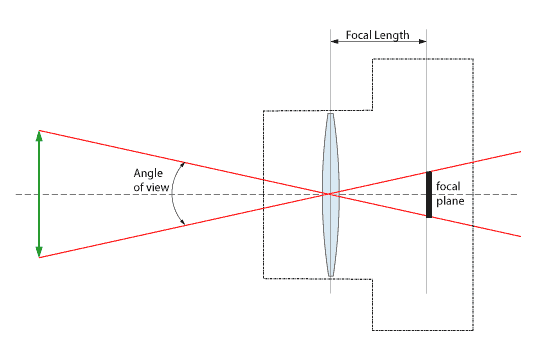
As you can see from the illustration above, as the focal length (distance) increases (say by moving the lens farther from the sensor), the angle of view narrows and the area that is projected on the sensor is smaller. Also, of course the size of the sensor plays a role too (imagine the sensor above being larger – you’d need a wider angle to fill the area). Lenses’ capabilities are expressed by their focal length, measured in mm, rather than by the view angle. A standard kit lens might be 28 – 80 mm or 18 – 55 mm. As I stated above, the actual result is dependent on the sensor size. On a 35mm (full-frame) sensor/film, 28mm corresponds to a 75° horizontal view angle.
Most dSLRs have smaller sensors, usually with a 1.5× “crop factor” (some Canons have 1.3× or 1.6×, the Foveon sensor has 1.7× and the Four Thirds system has 2×). Crop factor means that the full frame dimensions of 36 × 24 mm is divided by 1.5, resulting the sensor size of 24 × 16 mm.
The focal length gets multiplied by the crop factor. An 18 – 55 mm lens on a APS-C sensor corresponds approximately to a 28 – 80 mm on a full-frame sensor (18 × 1.5 = 27; 55 × 1.5 = 82).
If we are to divide lenses by their focal lengths, we can use the following table:
| Lens Type | Focal len. (full frame) | Focal len. (APS-C) | Angle of view |
|---|---|---|---|
| Ultra-wide | 15 – 24 mm | 10 – 15 mm | 111° – 84° |
| Wide | 24 – 35 mm | 15 – 23 mm | 84° – 63° |
| “Normal” | 50 mm | 33 mm | 47° |
| Portrait | 85 – 135 mm | 55 – 70 mm | 29° – 23° |
| Telephoto | 135 – 300 mm | 70 – 200 mm | 23° – 8° |
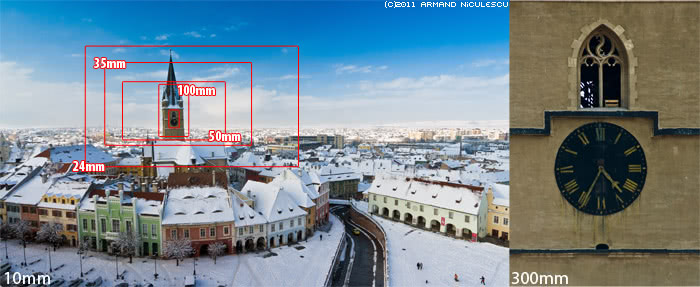
2.2. Aperture
The second-most important characteristic of a lens is its aperture. The aperture is simply a hole that allows more or less light to travel through the lens. It’s just like the eye pupil – in low light the pupil dilates, letting more light to hit the retina. In photography, this hole can be made larger or narrower in discrete intervals, called stops. The aperture number is expressed like f/2.8 or f/4. The sequence follows a geometric progression (sorry for all the math, I’m trying to keep it to a minimum): f/1, f/1.4, f/2, f/2.8, f/4, f/5.6, f/8, f/11, f/16, f/22, f/32. Subdivisions are allowed too, like f/3.5 or f/13.
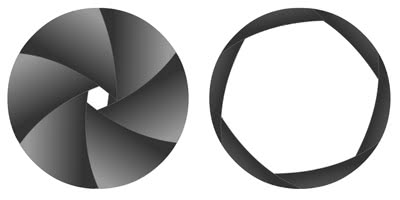
Just in case you’re wondering, this f-number means the “focal length divided by number” and gives the diameter of the aperture opening. For example, given a focal length of 50mm, at f/2 the aperture has a diameter of 25 mm (50/2).
The f-number affects the exposure time and the depth of field (we wrote an entire article devoted to Depth of Field). A small f-number means a wide aperture opening and therefore more light hitting the sensor. Lenses with small f-numbers are called “fast lenses” because they can be used with small exposure times, crucial in fast-action sports or in low light. On the other hand, large f-numbers (narrow apertures) are used to obtain more depth of field (a larger part of the image in focus).
In most common zoom lenses you’ll see the aperture expressed as in interval, e.g. f/4 – f/5.6. This means that at the shortest focal length the lens has a maximum aperture of f/4 while at the longest focal length it is capable of f/5.6. Lenses with constant aperture throughout the focal range are more expensive.
3. Types of lenses
3.1. Prime
Prime lenses have a fixed focal length, the most common being 50mm. Prime lenses are smaller and lighter than zoom lenses and because there’s a single focal length, they are optimized for it in terms of image quality. Usually they are also “faster” (allow for a wider aperture) than their zoom counterparts. Their disadvantage is, of course, that you have to physically get closer to or farther from your subject in order to reframe it.
3.2. Zoom
These represent the most common type of lenses because of their versatility. 30 years ago, a zoom was nowhere near the quality of a prime, but now they are more than adequate for 99% of the tasks. Zooms have a focal length range like 18 – 55 mm or 11 – 18mm or 70 – 200 mm to mention just some popular ranges.
At this point, you might ask, why don’t we have an “universal” zoom, something like 10-500mm, f/1.2? It’s because it would be incredibly impractical. While “super-zooms” do exist (18-250mm, or “14x”) they have to make compromises in image quality. At 300mm, to accommodate f/2.8, an aperture has to be 107mm (4.2″) in diameter, which is huge.
3.3. Macro
Macro lenses allow the photographer to capture an area that’s equal to or smaller than the sensor (or film) size. So, given a full-frame size of 36×24mm, a lens that can fill the frame with an area equal to (or smaller than) 36×24mm is a macro lens. It if captures an area of 18×12mm, we say it has a 2:1 magnification. Macro lenses beyond 1:1 are rare and expensive.
3.4. Fisheye
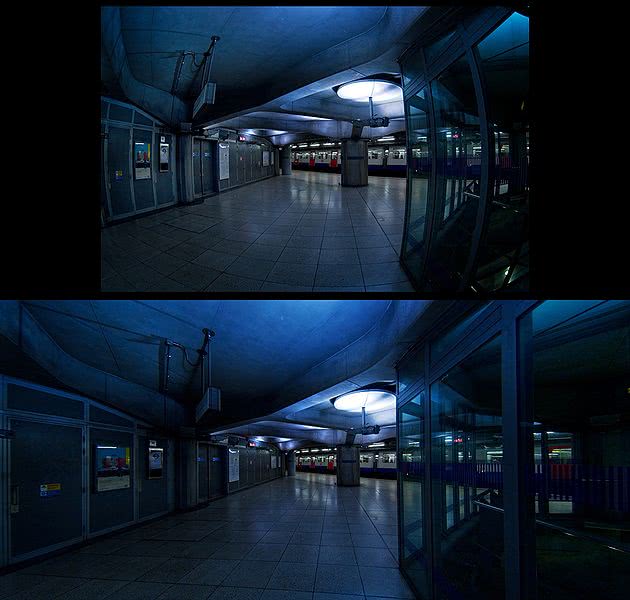
Fisheye lenses have an angle of view of 180°. They distort the image and usually they get through post-processing to either straighten them or to make part of spherical panoramas.
4. Mounts
Each camera system uses its own mount method. While adapters do exist, they are very often impractical, resulting in loss of quality or functionality or both. Fortunately most lenses have equivalents for all systems. Mounts are not just the hardware coupling system, but include interfaces between camera and lens – electrical and sometimes mechanical signals for autofocus and aperture control, focus distance info and more.
- Canon: Uses the EF and EF-S mounts. EF-S lenses can only be mounted on cameras cameras with APS-C sensors. EF lenses can be mounted on any Canon camera.
- Nikon: The F-mount, with some variations (MF for manual focus and AF, AF-D, AF-I and AF-S). Entry-level Nikon cameras won’t work with AF or AF-D lenses and AF-I and AF-S lenses can’t be mounted on older cameras.
- Minolta/Sony: The A-mount. Sony took over the Minolta camera business and the system is compatible both ways – you can put a new Sony lens on an older Minolta camera and vice-versa.
- Pentax K-Mount. There are many variations and incompatibilities.
- Sigma SA mount: Used by Sigma cameras.
- Four-Thirds: Used by some Olympus, Leica and Panasonic cameras.
5. Third-Party Manufacturers
Each major camera company makes lenses for their own system, including Canon, Nikon, Sony, Pentax and more. In addition, third-party manufacturers make lenses usually for all (or at least) some of the major mount systems. Of course, the primary manufacturers would want you to purchase exclusively their own lenses, but in many cases you can find a better quality/price ratio with a third party. Carl-Zeiss, Sigma, Tamron and Tokina all create lenses for the major systems, and at least Carl-Zeiss offering surpasses anything in terms of quality, albeit at a vey high price.
- Carl-Zeiss makes lenses for Canon (ZE series), Leica (ZM series), Nikon (ZF series), Pentax (ZK series) Sony/Minolta (ZA series) as well as medium-format lenses for Hasselblad and Rollei. With the exception of the lenses for Sony/Minolta, their lenses are manual focus only, although the integrate nicely in other respects (aperture control, distance integration, metering and so on).
- Sigma makes lenses for Sigma cameras, Canon EF, Four Thirds, Minolta/Sony, Nikon F and Pentax K .
- Tamron makes lenses for Canon EF, Minolta/Sony, Nikon F and Pentax K. Some Sony lenses are produced by Tamron.
- Tokina makes lenses for Canon EF and Nikon F. The company was founded by Nikon engineers and most of their sales are to Nikon owners. Their glass is supplied by Hoya.
- Other brands: Bower, Samyang, Vivitar, etc. These are usually inferior in quality and are best avoided. Quantaray is rebranded Tamron.
In terms of image quality (and in every other department as well), Carl-Zeiss is the best and most expensive. You can get a lens from Tamron with image quality that matches the Nikon/Canon equivalent at 1/2 or even 1/3 of the cost. Sigma and Tokina come next. Sometimes lenses from Tamron, Sigma and Tokina go through less stringent quality assurance processes and/or higher tolerances. This means that for the same lens model, one person can get a very good lens and someone else a passable one. As for build quality(long-term reliability) , rankings are Tamron, Tokina, Sigma.
Please bear in mind that this information comes from various surveys on the Internet, statements from repair centers and so on so it’s not 100% accurate.
6. Advanced lens characteristics
6.1. Full-frame vs. “digital” lenses
After the introduction of the smaller APS-C sensor (24×16mm – 1.5× crop factor), manufacturers started to make lenses specifically for this format. These lenses can be smaller as they require shorter focal distances and smaller apertures. An APS-C based camera usually accepts both full-frame and “digital” lenses, whereas full-frame cameras can’t use “digital” lenses as the image wouldn’t fill the frame, appearing only circular with black vignettes on the sides. As a note, if you put a full-frame lens on an APS-C camera, you’ll be using only the central part of the lens, which is usually sharper and has less distortions.
Each manufacturer has a different designation for their “for digital” line, here are the most common:
- Canon: EF-S (Short Back-Focus)
- Minolta/Sony: DT (digital technology)
- Nikon: DX
- Pentax: DA
- Sigma: DC (digital compact) – don’t confuse it with DG
- Tamron: Di II (don’t confuse it with Di)
- Tokina: DX (FX for full-frame)
6.2. Autofocus system
Some mounts have the AF motor in lens while other have it in the camera body. Each approach has its strengths and weaknesses. Generally speaking, not having a motor in lens makes the lens simpler, lighter, less prone to malfunction, reduces vibrations and it’s cheaper. On the other hand, a dedicated motor can contribute to a more silent and faster autofocus, especially noticeable only on big telephoto zooms.
- Canon: all EF and EF-S lenses have a motor.
- Minolta/Sony: almost all lenses are without a motor, relying on a camera body motor for autofocus; a few new lenses feature SAM (Smooth Autofocus Motor) and some high-end telephoto lenses are equipped with ultrasonic ones.
- Nikon: AF and AF-D lenses (older) use the camera body motor, with D standing for Distance integration; AF-I and AF-S lenses have integrated motors, S indicates an ultrasonic motor.
Some lenses are equipped with an ultrasonic motor, an electric motor that provides fast, accurate and silent movement. The technology was introduced by Canon but it’s now available for all manufacturers under different names:
- Canon: USM (UltraSonic Motor)
- Minolta/Sony: SSM (SuperSonic Motor)
- Nikon: SWM (Silent Wave Motor)
- Pentax: SDM (Silent Drive Motor)
- Sigma: HSM (HyperSonic Motor)
- Tamron: USD (Ultrasonic Silent Drive)
- Tokina: DC
6.3. Optical stabilization
Some lenses offer optical stabilization. A system of gyroscopic sensors and actuators moves parts of the glass assembly to compensate for small movement (shake, vibrations). The system works usually on two axis. If the system detects a sudden movement to the left, it moves the elements to the right. The system is very effective, improving the shutter speed by as much as 3-4 stops.
There is a rule of thumb in photography that says that for clear hand-held images, one should have a shutter speed of at least 1/focal length. So if you’re shooting with a focal length of 210mm, your shutter speed should be at least 1/210s, say 1/250s. A 1-stop improvement would be 1/125s, 2 stops is 1/60s and 3 stops is 1/30s. So instead of shooting at 1/250s, you shoot at 1/30s and get the same result. Of course this doesn’t work when the subject itself is moving fast.
An alternative to optical stabilized lenses are in-body stabilization systems. The principle is the same, except that the image sensor is moved around. Optical stabilized bodies have the advantage that they work with any lens, not just with with a select few (which are very expensive too). You buy it once and have the 3-stop improvement for any lens. Note that despite what fans might say, there is no difference in the efficiency of the in-lens vs. in-body systems.
Here are the systems:
- Canon: IS (Image stabilization)
- Nikon: VR (Vibration Reduction)
- Minolta/Sony: SSS (SuperSteady Shot); in-body stabilization, all lenses benefit from it
- Pentax: SR (Shake Reduction); in-body stabilization, all lenses benefit from it
- Sigma: OS (Optical Stabilization)
- Tamron: VC (Vibration Compensation)
Just in case you’re wondering, you can’t use both image stabilization methods at the same time, because they are not aware of each other and tend to overcompensate, so you’ll have to turn either of them off.
6.4. Quality
There are many types of optical imperfections, geometric and chromatic. I will go into more detail a bit later, but for now it’s important to note that all manufacturers have a way to distinguish their top line of lenses. These are lenses manufactured to tighter tolerances, with strict QA and use superior glass.
Glass elements on the lenses have various coatings (very thin film of chemical compounds) to reduce chromatic issues such as glare and ghosting. Because the digital sensor reflects much more light than film, newer lenses designed for digital cameras have additional coatings.
Another feature of the top lenses is the internal focusing mechanism, meaning that the front elements of the lens will not rotate when the lens is zoomed or focused. This is important when filters such as polarizers or linear gradients are fitted to the lens. An internal focusing mechanism ensures that the filter will not move upon zoom/focus.
- Carl-Zeiss: T*
- Canon: L (Luxury)
- Minolta/Sony: G
- Nikon: IF (Internal Focusing), ED (Extra Low Dispersion)
- Sigma: DG (Digital Grade coating), EX (superior build quality), APO (apochromatic)
- Tamron: SP (Super Performance) Di (Digital coating) LD (Low Dispersion), XR (Extra Refractive), ASL (aspherical), IF (Internal Focusing)
- Tokina: PRO, AS (Aspherical element), IF (Internal Focusing), SD (Super Low Dispersion), WR (water repellant)
6.5. Short recap of lens specifications
By now you should be able to read and understand the lens specs from their title.
Let’s consider some lenses from various brands (they are the more expensive kind):
- Nikon 55-200mm f/4-5.6G ED IF AF-S DX VR
This is a telephoto zoom lens for APS-C sensors (DX) with a range of 55 to 200mm and an maximum aperture of f/4 at 55mm and f/5.6 at 200mm, Low dispersion glass (ED), internal focusing system (IF), autofocus with internal ultrasonic motor (AF-S) and optical stabilization (VR). - Canon EF 70-200mm f/2.8L II IS USM
This a top of the line Canon lens (L), a full-frame (EF) telephoto lens with a range of 70 to 200mm and a constant maximum aperture of f/2.8, optical stabilization (IS) and ultrasonic motor (USM) - Sigma 10-20mm f/4-5.6 EX DC HSM
A Sigma ultrawide zoom lens for APS-C sensors only (DC), superior finish (EX) and ultrasonic motor (HSM). - Tamron AF 28-75mm f/2.8 SP XR ZL Di LD ASL (IF)
A normal zoom lens with f/2.8 constant aperture of professional build (SP), coating for digital sensors (Di), quality glass elements (XR, ZL, LD) and internal focusing (IF) - Carl Zeiss 135mm f/1.8 Sonnar T
A 135mm fixed focal length with a constant aperture of f/1.8 made by Zeiss for Sony.
It’s worth mentioning that the number of “badges” alone doesn’t say much about its quality.
7. Image quality considerations
7.1. Sharpness
Perceived sharpness is a factor of a lens resolution power (its ability to resolve fine detail) and lens contrast (or microcontrast as it’s sometimes defined). Sharpness varies with focal range; some manufacturers optimize a lens sharpness for the extremes of the focal range, other try to keep it relatively constant throughout the range. Sharpness also varies with the aperture. Lenses are “softer” when the aperture is wide, then sharpness increases progressively for 3 stops where it reaches maximum, then it starts to drop again due to diffraction. So, an f/5.6 lens would be sharpest at f/11. An f/2.8 one is sharpest at f/8 and so on. Sharpness also varies across the frame, with the center being the sharpest and the corners the softest.
You should play with your lenses and understand their strengths and weaknesses.
Sharpness can be calculated objectively and you will fine many MFT Charts on the net for almost any lens. It’s important not to obsess over it, or else you’ll spend all your time shooting test targets, walls and books instead of having fun.
Some “experts” claim not to worry about a lens performance at its widest aperture, advising to just “stop it down” (increase the f-number). The problem is that you usually want to make a portrait at wide aperture; you want to be able to use a lens effectively in low light. Why buy a f/2.8 lens if it’s usable just at f/5.6?
7.2. Distortion
All lenses suffer from geometric distortions to one degree or another. The bigger the focal range (say 18-250 mm), the more distortion there usually is, while primes are the best in this regard, with virtually no distortions. Distortions are usually “barrel”-like at wide angles and “pincushion” at telephoto ranges. The distortions are usually small enough that they are noticeable only when photographing architecture or objects with primarily straight lines, which appear curved.
7.3. Chromatic Aberration
There are two main types of chromatic problems: lateral chromatic aberration and purple fringing. Lateral chromatic aberration happens because the light refracts differently in glass depending on its wavelength; it is most noticeable at the corners of the image. Purple fringing happens mostly with digital sensors in areas of high contrast, so it’s not really optical related.
Good lenses have various optics to minimize lateral chromatic aberration; it is more apparent at wide angle and at wide apertures.

7.4. Vignetting
All lenses cause a decrease in brightness of an image at the sides compared to the center. This happens because the rear glass elements are shaded by the front elements.
7.5. Bokeh
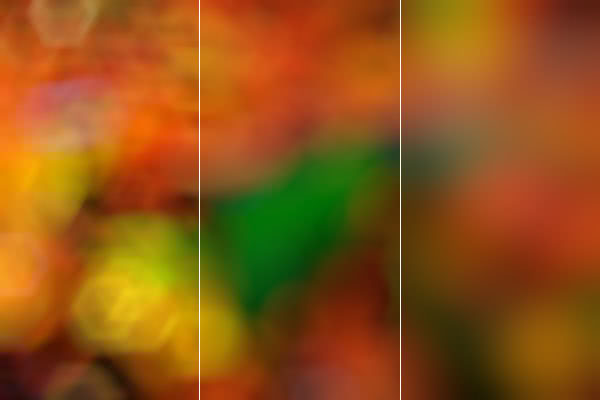
Out of focus areas create interesting light patterns. This effect is called “bokeh” (which is Japanese for “blurry”). The geometric shapes are determined by the number and shape of the aperture blades. More aperture blades create nicer shapes and if the blades are curved, the resulting shape is circular. Depending on design of the glass elements of the lens, the out-of-focus pattern (bokeh) is rendered differently. “Good” bokeh and “bad” bokeh are subjective terms, although a smooth transition is considered more pleasing than hard geometrical shapes.
7.6. Flares and ghosts
Lens flares. You know what they are. The funny thing is that modern lenses have flare under control to the point that most flares are computer-generated.
7.7 Lens features to maximize quality
As seen in section 6.4, lenses boast a number of features, most of them designed to improve image quality. Here I will explain some of these features:
- Coatings: Manufacturers have many fancy names for lens coatings (“super-integrating”, “nano-coating” and so on). They are essentially chemical substances placed as very thin films over lens elements. Various coatings are used to minimize reflections in internal lens elements, thus reducing or eliminating ghosting and flares. Some lenses have also anti-grease (oleophobic) or water-repellant substances over the front lens elements. All major manufacturers treat their lenses and the results are generally about the same. Newer lenses also have the so-called “digital coating”, an extra coating layer on the back lens element to minimize reflections between the lens and the sensor (film cameras did not have that problem as the film is less reflective than the image sensor). This is why using old (film-era) lenses on digital cameras may produce unwanted purple fringing.
- Low-dispersion elements: whether called extra-low or super-low or just low, these elements are designed to minimize light dispersion, that is light scattering depending on wavelength. This means improved sharpness and reduced chromatic abberations. These elements make quite a difference in image quality.
- Apochromatic elements: refers to low-dispersion elements.
- Ashperical elements: they are designed to reduce image distortions, especially at wide angles. This doesn’t mean that lenses without aspherical elements will have large distorsions, because you can obtain the same correction with spherical elements too, but including a single aspherical element instead of two “normal” ones will result in a lighter lens and less flare.
8. The right lens for you
There is no one-size-fits-all kind of lens. There are always tradeoffs in technical specs, size/weight and price. With this in mind, I’m suggesting a few lens types depending on your camera and intended activity. The list is by no means exhaustive, but it should be a good starting point.
NOTE: If you’re not seeing the lenses below, please disable AdBlock.
8.1. Multipurpose
First of all, every photographer should have a 50mm f/1.8 prime lens. They are small, light and quite inexpensive and can prove a nice fallback regardless of the type of photography. They are great for travel because they are so small, good for photojournalism because of their ability to work in low light and excellent for portraits because their shallow depth of field blurs the background nicely.
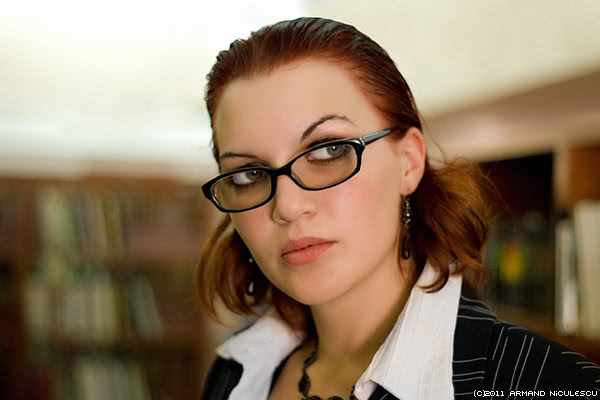
8.2. Travel
Travel photography also means a lot of different shots – one moment you’ll want to take a wide angle of a square or vista and the next you’ll zoom in to an architectural detail. In this case, for APS-C cameras, an 18-200mm zoom would be nice.
These superzooms don’t have extraordinary distortion or chromatic correction, but they should be just fine for casual travel shots.
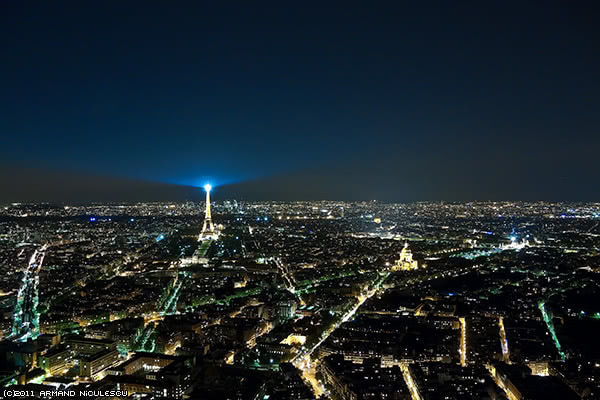
8.3. Photojournalism
Photojournalism can mean many things, from photographing people on the street to weddings to images from the middle of a disaster area and wars. The unifying motif of all these is the unpredictability and uniqueness of the event. Something is happening, you don’t know what will happen next and you can’t say “let’s try one more time”. The keyword here is versatility (and quality if you intend to shoot professionally). You’ll need a wide aperture and both wide and tele capabilities. For this reason, many photojournalists carry two cameras with them, one with a wide-angle zoom, one with a telephoto one (see Portraits).
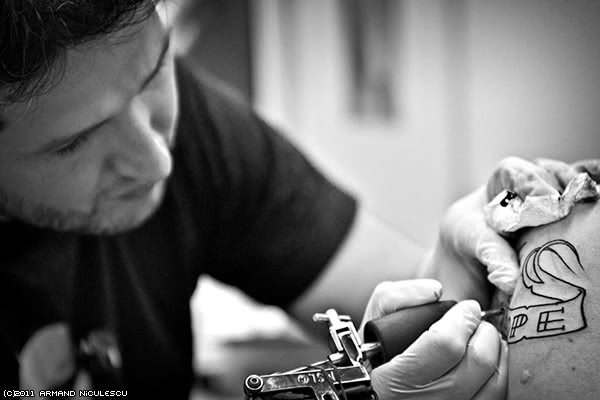
8.4. Landscape & Architecture
Most of the time, architectural shots (especially) interiors and landscapes love wide angles. Of course, that’s not to say that you can’t use a wide super angular lens for something else or that you shouldn’t use a telephoto for landscapes, but you won’t get away without having something wide enough.
Personally I’m not a big fan of fisheye lenses, but you may investigate these as well.

8.5. Macro
Macro photography is a world in its own. Filters, macro lenses and extension tubes, special tripods and macro ring flashes. Therefore, I’ll refrain from making any suggestions on this area, as the choice for lens is just a subset of all the things you must keep in mind.
8.6. Portraits
Portraits look best when done with a focal length ranging from 80 to 135mm (full frame). A wide aperture is desired for background separation.
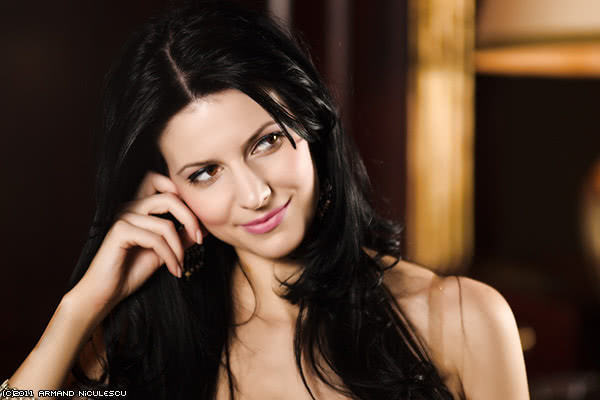
Most portrait photographers, as well as journalists and even nature lovers, will use a 70-200mm f/2.8 lens. These are all full-frame, professional lenses.
Some dedicated portrait photographers might use also 85mm and 135mm primes. The have very shallow DOF (f/2.0 or f/1.8) and can create incredible portraits and effects, but it takes time and practice to get the most out of them and for this reason I will not list them here.
8.7. Sport & Wildlife
In my opinion this is the most expensive kind of photography. You need really big telephoto lenses – 200mm is a minimum, 300-400mm commonly used and up to 600mm. A wide aperture is required to capture fast action and to make sure that hand-held shots are sharp. These lenses are insanely expensive, starting at $5000 and with sky being the limit. I would not recommend anyone to buy one of these as a hobby.
The 100-400 zooms are barely enough. Their f/5.6 aperture at the longest focal length means that you won’t be able to use them effectively in any circumstance other than broad daylight. For example, an overcast day is ~EV12 (EV stands for Exposure value). EV12, at f/5.6 requires an exposure of 1/125s at ISO100. For fast action that’s not nearly enough; you need at least 1/250s or more (depending on the kind of motion) to make sure that you freeze the action, so you’d need to shoot anywhere from ISO200 to ISO800.
It’s worth mentioning that not everyone spends a fortune on lenses. National Geographic photographer Mark Thiessen uses a Canon 5D and a 70-200mm f/2.8 zoom. It depends on what you are usually photographing: an eagle fills the frame much easier than a sparrow; on the other hand it’s easier (or at least safer) to get closer to a hare than a bear.
You can also use teleconverters, although there’s a significant image quality degradation involved; some photographers go as far as saying that upscaling an image 2x brings about the same results as using a 2x teleconverter.
9. Where to buy from
9.1. New
All major retailers are pretty much the same and most of the time the smaller ones too; I included links to Amazon.com for convenience only. Just make sure it’s a reputable company (avoid bargains – you know the saying: “if it seems too good to be true, it probably is“).
I encourage you to head to your local camera store if possible, because holding a lens in your hand and making a few test shots can really make a difference. Some lenses are huge, a lot bigger than you’d imagine from pictures or by looking at the dimensions and can be very heavy.
9.2. Grey Market
Despite its rather dubious name, “grey market” doesn’t mean anything illegal (not even immoral; the term was coined by distributors to give some negative connotations). Buying a lens from the grey market simply mean buying it from outside the official national distributors in your country. So if you are from US and make a trip to Hong Kong, it’s perfectly legal to buy a lens from a store there and bring it back to the States; you can order it online as well. The only problem is that the warranty may not be valid. To give another example, if you’re from UK and you buy the lens from US, it may come with an US warranty and UK repair centres might refuse to repair the lens under that warranty. Two of my lenses are “grey market” and I’m very happy with them.
9.3. Used
Fact: lenses outlast cameras. Also, there isn’t that much innovation in lenses. A lens made 20 years ago can be just as good (or better) than a new one and unless abused, it will work just fine. Because of this, buying a used lens can make more sense than buying an used camera.
To paraphrase Mr. Gump, eBay is like a box of chocolate – you never know what you gonna get. I bought 2 used lenses from two sites, one from eBay and one from a local Craiglist-kind of site. They both turned out very well. I also bought a used flash from Adorama, it was listed as being in “Excellent” condition. I wonder how one in “Good” condition would have been, because the “excellent” one proved to be terrible.
Assuming you don’t get scammed, there are some defects you may want to have a look at. Very old lenses tend to develop fungus inside and if you spot oil on the aperture blades, it’s a sign that the lens needs repair. Newer lenses shouldn’t have this problem, but of course you’re at the mercy of the seller for accurate statements regarding how smooth the zoom ring works, how well the AF performs and so on.
In conclusion, buying a used lens, especially one that you can’t test prior to purchasing, is a gamble and don’t expect to find a real bargain, although you can save some money.
10. Do your homework
I am not a big shot photographer. At heart, I am a mechanical engineer and I like approaching a subject from all angles in a thorough fashion. I am also an economist (marketing) and I know how branding operates. Finally, I am passionate about photography and I enjoy sharing from my knowledge and experience. It took me two weeks to write this article, which is over 10 times longer than an average blog post. I had to fact-check every statement, look up equivalent lenses for different systems and make sure every bit of info is presented in an easy to understand manner yet not “dumbed-down” or inaccurate. I also tried to be objective with regard to brand names and advices. My only regret is that I couldn’t include more info about Pentax and the Four Thirds; still, the theoretical info from the beginning applies to all lenses, so even owner of other camera brands will be able to appreciate it.
I spent all this time so you don’t have to. Still, it’s good practice to do some research before buying a lens. Be realistic in your requirements. If you’re taking photos of your kids or pets or birds at the zoo, you simply don’t need the kind of gear a photojournalist covering the Olympics would need. Be realistic over expectations too. Just having the biggest and meanest lens won’t solve all your problems; it will increase the quality, but if the subject and composition are dull, nothing will help. Don’t get sucked into overanalyzing MFT charts. Mathematically, lens A may deliver 20% more detail (line widths / picture height) than lens B but you’d be hard-pressed to notice this in a sample. And if lens A costs 400% more than lens B… well, it may or may not be worth it, depending on how crucial small details are to you. I never had a problem with my lenses although they are not environmentally sealed, but then again, I never shot in a desert.
Above all, approach your purchase with an objective eye. Don’t be a fanboy, the kind that gets all the clothing only from DKNY, without even considering the alternatives. Companies love brand loyalty because it removes decision. Don’t let them. Do your homework and get the best lens for you.






53 Responses
Armand,
Excellent and very helpful article! I am struggling with the decision to purchase a Nikon AF-S 70-200mm f/2.8G ED VR II lens. Wonderful lens but expensive and heavy. Would it be overkill for an enthusiast photographer and will I even be able to tell the difference with my cheap Nikon DX 55-200mm VR on a Nikon D5000 body (which, by the way takes beautiful pics)?
Thanks!
Corina
Corina, the 55-200 mm is a perfectly adequate lens for an enthusiast. It’s small, light, good in terms of optics. I would not recommend the 70-200mm f/2.8 one unless you shoot fast action (anything from soccer games to dance contests or race cars) or if you’re doing commercial work so you can treat it as an investment.
Armand,
Thank you for your reply. It was pretty much what I was expecting. I was intending to shoot mostly portraits and scenery with the 70-200 (I spend a lot of vacations in Hawaii), so I guess I will stick to my 50mm f/1.4G for that and keep the 55-200 for more versatility. It is waaay easier to carry and handle!
Corina
Thanks for the great article. I am just beginning the search (and saving for) a wide aperture telephoto zoom and this helped me review the basics. I’m always nervous deviating from Nikkor lenses but am going to research research research.
Thank you!! Armand, this article is very helpful!
Hi Armand, thanks for this wonderful article.
I am an enthusiast photographer using Canon 550D, and I have the 18-55mm kit lens and a 50mm f/1.8 prime. Now I want to invest in a zoom lens (mostly for travel and also to cover some community sports events where shooting from a distance is required).
Do you have any recommendations for my Canon mount? My budget would be around $400.
Thanks.
In that price range, your best bet would be a Tamron, for $450: Tamron AF 70-300mm f/4.0-5.6
Or you don’t want to get a 3rd-party lens, the closest match from Canon would be Canon EF 70-300mm f/4-5.6 IS USM for over $500.
Thank you very much for your great artical!
all very helpfull!..
i use a D7000 and want to buy a SIGMA 70-200/2.8 APO EX DG OS HSM..
do you have experience with this lens?
thank you!
It’s a decent but not great lens. Fast AF, but not very sharp. The image quality gets worse at higher focal lengths.
Depending on what you intend to use the lens for, you may prefer the similar lens from Tamron (which I have). Tamron AF 70-200mm f/2.8 has significantly better optics but slower AF performance. For me, it’s OK, because I do portraits with it, not sports.
How much vibration can a Canon IS lense take. I intend to travel with my motorcycle and camera in a tank bag (or pannier) for about 1500km.
Unless you keep the revs at resonance frequency for a long time, I wouldn’t worry about it; just make sure the bag is padded adequately. I can’t give you any hard guarantees, but in 10 years I haven’t had any problems and some of my friends are bikers, no one ever attributed camera failure to vibrations.
i have canon kiss x3…with 18-55mm lens…i also bought 50mm 1:1.8 II and also EF 75-300mm 1:4-5.6 III…im just a frequent traveller aside from beinga doctor..i love taking pictures of my 3 adorable kids..and also my husband too =)….what lens should i buy next…i think the 18-55 is the least that i use…thank you
Armand,
terrific treatment of an interesting but tangled topic. I have a Canon T1i and love it. Big improvement over the 350D. Autofocus on the 18-55 kit lens (which was so so) died and now I have an excuse to buy an upgrade lens. I am going round and round between the Tamron 17-50 2.8 non is and the Canon 17-40 L. Kids are getting older and I dont have quite as great of a need for candid family shots, and I am developing an interest in landscape work, though still want something workdable. have handled both lens and I like the feel, weight and balance of the Tamron. I took sample shots of both and the color with the Canon seems more lush. blues are bluer and reds are deeper. could not tell about sharpness. Build on both seems fine. I am a little concerned about the lack of reach with Canon, but can’t I just take a few steps closer? My biggest gripe with the 18-55 is the flat color tones. it was sharp but if the colors dont pop who cares? So, any thoughts for me? I keep going round and round. Thanks for any thoughts! You are correct, the lens has to be right for the individual. Frank
Frank, assuming money is no issue, I’d say get the Canon 17-40 L.
For landscape and architecture you may even want to look at an ultra-wide. I have a 10-20mm lens and I love it.
I wish to buy a lense (for DSLR canon) to photgraph the weather maps.
I need mininum distortiion and good quality (about 300dpi).
Is it possible to get a fixed lens to do the job.
I am bit confused with all the discriptions. Could you get me some idea?
Thanks
Hakeem
How big are the maps? You’d be better off scanning them…
Photographing a painting or a map is not that easy (if you want good results).
However in your case post-processing is more important – programs like Lightroom and DXO can adjust the perspective and lens distortions.
salut armand, vin la tine cu o nelamurire pt mine: exista vreo diferenta semnificativa intre un obiectiv care are o lentina asferica (de exemplu, ma refer la: Nikon 18-105mm VR) si un obiectiv care nu are una asferica dar re in schimb 2 lentile ED (de exemplu, ma refer la: Nikon 55-300mm VR)? am un nikon d3000 cu obiectiv de 18-55mm, dar vreau sa fac un upgrade la obiectiv, de asta te intreb. parerea ta ca si profesionist in acest segment, care obiectiv ar fi mai potrivit…cel de 18-105mm sau cel de 55-300mm? Ma intereseaza cel si cel mai mult si doar strict…calitatea pozelor. Dam deoparte momentan aspectul ce tine de Wide si Tele, pt ca ambele obiective am un zoom mai mult decat satisfacator pt mine. Sincer unii spun, ca si calitate a pozelor (urmaresc sa am niste poze mai…crystal clear, decat ce realizez eu acum cu 18-55mm) obiectivele sunt la fel si nu se diferentiaza cu nimic, altii zic ca 18-105 are o idee mai multa claritate in poze, tu ce crezi?! ce ai alege in locul meu, strict vorbind doar intre cele 2 modele din punct de vedere al calitatatii pozei, atat!. ms mult pt timpul acordat, si sper sa ma sfatuiesti cu incredere pt ca tot nu pot sa`mi dau seama foarte bine ce sa aleg. Am citit si review-urile tale la Lentile, am si tras poze cu ambele obiective, care parca totusi pozele ies la fel calitativ, asa ca nu stiu ce sa mai cred! 🙂 seara faina!
Mda, n-am explicat in articol de face fiecare. Elementele (lentilele) asferice dintr-un obiectiv ajuta la reducerea distorsiunilor (in special pe wide). ED vine de la Extra-Low Dispersion si ajuta la cresterea claritatii (sharpness) prin reducerea aberatiilor cromatice. Deci strict din punct de vedere al claritatii, elementele ED vor fi de mai mult ajutor.
In practica insa, nu mi-as face atatea griji. Nikon are, dupa parerea mea, cea mai buna optica, e imposibil sa iei un obiectiv cu adevarat prost. Orice diferente vizibile de sharpness tin de tehnica, prelucrare, etc.
Armand,
I just stumble upon this article, and I must say what an unbiased quality reporting on buying a lens! Someone like me coming from a arsenal of film SLRs, this article is worth preserving to refer back time & again. Thanks for working so hard to put the facts together so that we don’t have to. How about some unbiased article on new breed of Compact Lens Camera systems from Panasonic, Sony, Olympus, etc? Also an article on Hybrid/bridge cameras would be highly appreciated. Keep up the great work.
Have you ever thought about creating an ebook or guest authoring on other blogs?
I have a blog based upon on the same information
you discuss and would love to have you share some stories/information.
I know my audience would value your work. If you are even remotely interested, feel free to shoot
me an e mail.
Thank you. My problem is finding time to write…
Hi Armand,
I am in the process of buying a new SLR and some lenses for my basic photography. To be honest you article has helped me in making decision, which I was not able to make for over a month. 🙂
Thank you very much for a to-the-point, practical article, which I am sure, useful for armatures as well as semi-professionals.
Hi,
I have Nikon D5000 with nikon 18-200mm VRII lens for general photography & nikkor 35mm 1.8g for low lights. I am planning to buy pro lens with aperture 1.4f for portraits [half body & full body with pleasant bookeh]. Read positive review about Sigma 85mm 1.4f. Shall i go for this lens or opt for 70-200 mm f2.8 lens. I find the later ones very heavy & cumbersome to carry as I dont shoot sports. Please advice which one is better as I will switch to full frame when nikon releases their low price full frame DSLR this year end or early next year. Thanks in advance 🙂
Mike, I use a Tamron 70-200 F/2.8 lens for portraits, it’s a favorite of mine. It’s true that it’s heavy and cumbersome. I don’t have first-hand experience with the Sigma 85mm F/1.4 but the specs look good and you’re interested only in portraits, it would be a better choice.
Hi Armand, thanks for your very informative article. I have a Nikon D3100 w/18-44mm lens and quite happy with it till I see the features of Nikon 5100 which I thought I would need when we travel next year. If I decide to buy the Nikon 5100, can I use the same lens I have now and just buy another more powerful lens? If so, which type of lens would you recommend for landscape shots? Appreciate your reply.
Beth, yes, you can use the lens. For landscapes I love ultra-wide lenses in the 10-20 mm range. There are many choices, depending on your budget. A Tamron AF 10-24mm is $500.
Armand
I am taking your advice to get a Canon 650D from anther post in your article about getting your first dSLR. I am still finding your articles very helpful and informative. Now I just want to get some advise on lenses. The Canon EF 70-300mm f/4-5.6 IS USM that you recommended to someone else in this article sounds like it might be one of the lenses that I would like. I was wondering what you thought about the EF-S 18-135 IS STM that be purchased with the camera as a kit to have in addition to the 70-300mm. Most of my interest are traveling, mostly on motorcycles, a bit of outdoor sports and, outings on the boat to the lake.
Thanks so much for your continued help!
Sean
The 18-135 lens is nice, but I would not buy the 70-300 right away. You have plenty of zoom power with the 18-135 so I’d rather save the money in the beginning and learn the kit lens first. The 70-300 is not a great lens anyway.
Thanks so much for your in put and the savings!
Sean
Armand
Apologies for coming so late to this thread; I have only just been made aware that you received an item from Adorama which did not meet the high standards that you would expect from a unit rated as Excellent.
All of our used items rated E come with a 6-month warranty, which includes a 30-day returns period. I do hope that when you contacted our customer service department to note this matter that you were looked after and that the exchange or refund was carried out smoothly.
If that was not the case, please do email me directly, with your order number, and I will give it my immediate attention: [email protected].
Please accept my apologies for the frustration and disappointment that was caused, and I look forward to hearing from you.
Helen Oster
Adorama Camera Customer Service Ambassador
Hi Armand,
Thanks for your Article. After reading that Article, I decided to take some advices from you about Buying Digital SLR and Len.I was Shooting Jewel Products with my Canon G7 for almost 7 Years now. Start of last 6 months, I plan to Upgrade my Point and Shot Camera with Professional One. But, I didn’t have any Ideas about that. I want to know that , which Camera and Len, should I buy for Macro Shooting. I plan to spend around ($2,000) for that Budget.Hope, I’ll get reply from you, soon.
Regards,
Kenneth
Kenneth, jewels are difficult to get right but also exciting. I made a catalog myself a few years back.
Considering that is studio photography and the camera will be mounted on a tripod, resolution is more important than other fancy things. You don’t specify the target medium of the photos: are they for web or professional print? How much retouching is needed typically?
I think a Canon T4i + Canon 60mm f/2.8 Macro would be a nice combo to get you started.
Thank you for your recommendation. I really Appreciated. We take Varieties of Jewels photo ( Gold and Gem Rings,Pendants, Lockets, Bagels,Necklaces ,etc.. ) for Product Catalog to get Customer Order. Sometime, we use that Products photo in Pamphlets , Wall Sheet and other Forms, for Marketing Purpose. Generally speaking, we use for Professional Print. We retouched every photo with Adobe Photoshop software. But, sometime some products photo are out of Focus or Missing Point, cuz of Auto Focus Function. That’s why , we think about DSLR Camera.But, we didn’t use that kind of camera before and cuz of that reason, we are delay to move forward.
Then my recommendation stands. One cool feature available for 60D (and usually mid-to-high-end cameras) is tethered capture. You hook the camera to a computer and shoot, you get to see the pics directly on the big screen, so you can easily make any focus adjustments. One note: dSRLs have a much bigger sensor and that means shallower DOF (meaning less of the object will be in focus. You should set the aperture to F/16 or even more to get the whole object in focus.
Hello Armand,
Thank you so much for this detailed article – it is very insightful!! It is extremely thorough and contains a great deal of valuable information. I have a Nikon D5000 and have been using the 18-55mm kit lens and I lucked out with a used 55-200mm lens I bought on ebay. I was looking at getting a 50mm f/1.8G AF-S, but they seem to be sold out everywhere and delivery could take up to 2 months. I would like to keep the lens under $300, but I was hoping you could recommend something similar that is more widely available. Is there a significant difference between the 50mm f/1.8 or f/1.4? How different would a 35mm or 40mm be? Thank you!!
Julianne, a 50mm F/1.4 lens is gorgeous for portraits but it’s very expensive and you have to be very careful with focus when the aperture is wide open, the DOF is razor-thin! A 35mm lens is wider and thus more general-purpose. So it largely depends on what you’re shooting mostly.
I am purchasing a new Nikon D3200 with in the next few weeks and Ill be taking pictures of my husband & his Brazilian Jiu-Jitsu team mostly, at lease that is my main choice for the camera, Im sure I’ll take pics of the kids and the zoo and all that too. I am curious as to what lens you would suggest for the Jiu-Jitsu shots, as they are action but they aren’t runners or swimmers there is quite a bit of moving around though. Any help would be greatly appreciated.
Naryamie, you definitely need a “fast” sports lens. If Jiu-Jitsu is a one-time competition event, you should consider renting a Nikon 70-200 F/2.8 lens, especially for indoor photos. The lens itself is very expensive ($2400 on Amazon.com). If you can get close the action or if the action takes place outside in good light, then less expensive alternatives can be used. I used to photograph latin dancing contests and it can get difficult.
Zoo on the other hand is not that much of a problem. Any telephoto lens will do.
Wow! Great article. I don’t have a dslr now but planning to buy one. Reading your article helped me become more informed and will definitely help me in my decision making. Thanks!
I hav nikon d3100…Nikon 55-200mm lense,Tamron AF 19-35mm f-3.5-4.5 or Nikon AF Nikkor 50mm f/1.8D Lens,Nikon AF Zoom-Nikkor 70-300mm f/4-5.6G (4.3x) Lens what would be a good buy for zoom,macro and wide angle….i am new in photo graphy kindly help me….reply soon plz…..Thnx plz mail me @ [email protected]
These are some nice lenses. For ultra-wide-angle, something like Sigma 10-20, or Nikon 10-24.
I’m not very familiar with dedicated macro lenses, I can’t recommend something without more research…
I Armand, ty so much for your time
i have a canon 650d…do you know if the Sigma DG 70-300mm 1:4-5.6 Len fit my camera?
and what chep but descent len can i buy to completed my started kit (for now) i already have the 18 55 that came with the camera and a 50mm 1.8 both for canon.
thanks again for your useful service!
Yes, the Sigma DG 70-300mm is available for Canon mount. I don’t have any personal experience with it though so I can’t comment on quality.
I do not understand this post – there are many empty tables and I think the content of these tables is not shown for any technical reason – please check this, thanks!
It’s probably your AdBlock blocking lens boxes from Amazon.
“The 18-135 lens is nice, but I would not buy the 70-300 right away. You have plenty of zoom power with the 18-135 so I’d rather save the money in the beginning and learn the kit lens first. The 70-300 is not a great lens anyway.” as you have mentioned to Sean…
I have a Canon EOS 650D with 18-55mm kit and planning to buy the EF 70-300mm f/4-5.6 IS USM bur you have mentioned that the said lens is not great anyway… any other suggestion that will be considered ‘great’ of the same value?
It depends on the kind of photography you usually do. I have a nice 70-200 F/2.8 zoom that’s great but it’s big and heavy so when I travel I prefer a 18-200 super-zoom that gets the job done.
Armand, you’re awesome. I’ve two questions for you. I learned how to compose and shoot years ago on my father’s Yashica Electro 35. I always had great fun and satisfying results, but I haven’t gone out shooting regularly for more than a decade. I’ve finally caught the bug again and just bought a Panasonic Lumix GX1 with the manual zoom kit lens. The m43 cameras appeal to me because they remind so much of my rangefinder days. However, I do find I am having relearn everything I once knew about exposure and technique. That said here are my two questions: 1) I would like to get the external optical viewfinder and the 20mm pancake lens, but I am on a fairly tight budget, meaning after I buy one, it will probably be another month or two before I can buy the second piece of gear. Have you any suggestion as to which I should buy first? One caveat is that I’ve read that the Yashica telephoto lens optical viewfinder that I still have should fit and work on the GX1. Should I go for the pancake lens and see how it works with the Yashica viewfinder or should I get the “proper” viewfinder and maybe luck out and catch a deal on the 20mm lens in a couple of months.
2) Like I said, I’ve forgotten all the technical stuff about photography. Could you explain to me what this means that 20 mm lens is the focal distance equivalent to 40 mm on a 35 mm film camera?”
Thank you!
What to get first is a matter of taste. I’d go for the pancake first.
Correct, the sensor size of the GX1 results in a focal length multiplier of 2. So a 20mm lens for GX1 is the equivalent of a 40mm lens on a 35mm camera.
Armand, thanks for the time to write. I will be purchasing my first DSLR (refurbished Canon T3i) but am debating over my lenses. I am debating over the Canon 18-135mm f/3.5-5.6 IS and the Tamron 18-200mm F/3.5-6.3 Di II? Looking for a travel lens focusing on scenery/landscapes/sunsets and that zoom to reach in and “grab” things. I am also planning to purchase the Canon 50mm f/1.8 for my low light, portrait, and street photography. Your thoughts?
Personally I’d go with the Canon 18-135mm lens. The 50mm f/1.8 is very useful in low light – good choice.
Hi Armand,
very good article especially for me, i have just bought a Nikon D3200 with kit lens (18-55), now i am looking for a lens for both indoor and outdoor photography,,,,,, can you suggest me one?
i also confused about the difference b/w 55-200 v/s 70-300 both have a 4x zoom capacity?
For indoor you need a lens with wide aperture (F/2.8 or better). A 50mm F/1.8 lens is great for portraits in low light but it’s not a zoom, so you may find it a bit limited. A 16-50mm F/2.8 zoom is great both for indoor and outdoor and it’s wide enough to get rooms, landscapes and so on. It it more expensive though.
The numbers on the lenses (e.g. 55-200) represent the focal distance. That number, combined with the sensor size gives the viewing angle. On a Nikon D3200 (with an APS-C sensor), a lens at 10mm means ultra-wide, 16-18 is wide, 35mm is normal, 50-70 is short telephoto (best for portraits) and everything above is telephoto.
So, the 55-200 is wider at the short end (55 vs. 70). Personally I’d go with the 70-300 lens. With the two lenses 18-55 and 70-300 you’ll have a “gap” between 55 and 70mm, but in practice it won’t matter.
Comments are closed.